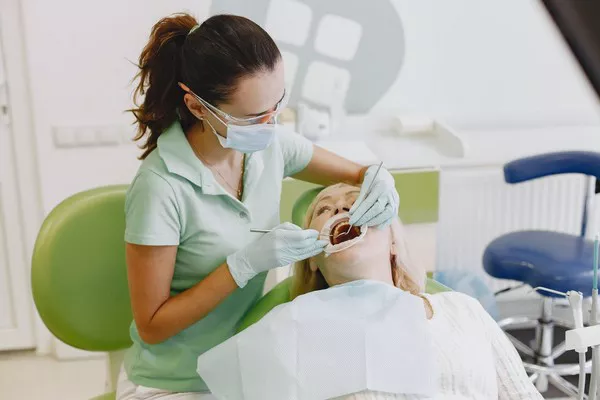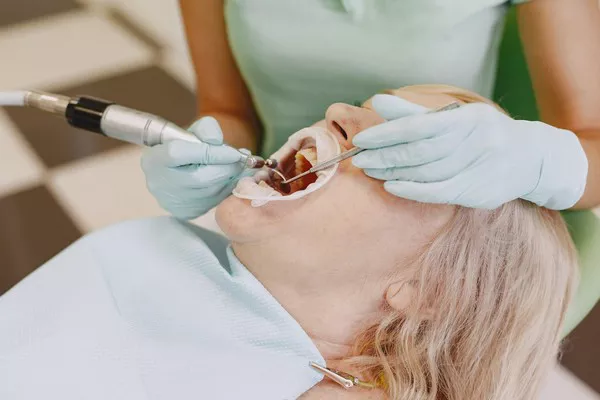Dental fillings are a common treatment used to restore teeth damaged by decay or cavities. While fillings help alleviate pain and strengthen the affected tooth, it’s not uncommon for individuals to experience temporary discomfort following the procedure. Understanding the factors that contribute to post-filling sensitivity and knowing what to expect can help patients manage their expectations and make informed decisions about their oral health. In this article, we will explore the causes of temporary discomfort after dental fillings, typical durations of discomfort, home remedies for relief, and when to seek professional guidance.
1. Causes of Post-Filling Sensitivity
Temporary discomfort after dental fillings can arise from several factors. It’s essential to understand these causes to differentiate between normal post-treatment sensitivity and potential complications. Here are some common reasons:
Nerve Irritation: During the filling procedure, the dentist removes decayed tooth material, which may include areas close to the nerve endings. This can cause temporary irritation and sensitivity.
Inflammation of Pulp Tissue: The process of preparing the tooth for the filling, such as cleaning and etching, can lead to inflammation of the pulp tissue within the tooth. This can result in sensitivity.
Bite Adjustment: After receiving a filling, your dentist may perform bite adjustments to ensure proper occlusion (how the upper and lower teeth fit together). Minor alterations to your bite can cause temporary discomfort until the mouth adapts to the new restoration.
Temperature and Pressure Sensitivity: Teeth may become more sensitive to hot or cold temperatures, as well as pressure, immediately following the filling procedure. This sensitivity should subside over time.
2. Duration of Discomfort
The duration of discomfort after a dental filling can vary depending on several factors. While every individual’s experience is unique, there are general timelines to consider:
Immediate Sensitivity: It is common to experience some sensitivity immediately after the local anesthesia wears off and the filling is placed. This sensitivity may last a few hours or up to a couple of days.
Short-Term Sensitivity: Mild sensitivity to hot, cold, or pressure can persist for a few weeks following the placement of a dental filling. In most cases, this sensitivity gradually decreases over time.
Longer-Term Sensitivity: In certain situations, post-filling sensitivity may last longer. This can occur if the filling is deep, close to the nerve, or if there was pre-existing inflammation or damage to the tooth pulp. However, prolonged sensitivity beyond a few weeks should be evaluated by your dentist.
Individual Factors: Each person’s threshold for pain and response to dental procedures can vary. Some individuals may experience minimal discomfort, while others may have heightened sensitivity that lasts longer than average.
3. Home Remedies for Relief
While temporary discomfort after a dental filling is normal, there are several home remedies and self-care practices that can help alleviate symptoms. Here are some tips for relief:
Over-the-Counter Pain Relievers: Non-prescription pain relievers such as ibuprofen or acetaminophen can help manage post-filling discomfort. Follow the instructions on the packaging and consult with your dentist or pharmacist before use.
Desensitizing Toothpaste: Use desensitizing toothpaste containing ingredients like potassium nitrate or fluoride to reduce sensitivity. Apply a small amount to the affected tooth and gently brush the area.
Avoid Extreme Temperatures: During the healing process, avoid consuming extremely hot or cold foods and beverages. Opt for lukewarm or room temperature options to minimize sensitivity.
Soft Diet: Choose softer foods that don’t require excessive chewing. This reduces the strain on the treated tooth and minimizes discomfort. Incorporate foods such as yogurt, soups, mashed vegetables, and smoothies into your diet.
Good Oral Hygiene: Maintain good oral hygiene practices by brushing gently with a soft-bristled toothbrush and using a fluoride mouthwash recommended by your dentist. This helps prevent further irritation of the treated tooth and promotes healing.
Avoid Teeth Grinding: If you tend to grind or clench your teeth, consider wearing a nightguard (occlusal splint) provided by your dentist. This can help protect the filling and reduce potential sensitivity caused by excessive pressure.
4. When to Seek Professional Guidance
Persistent or Severe Pain:
It’s normal to experience some mild discomfort after a dental filling, but if you’re experiencing persistent or severe pain that does not subside after a few days, it’s essential to seek professional guidance. This could be an indication of complications such as nerve damage, infection, or an ill-fitting filling that requires immediate attention from your dentist.
Sensitivity to Temperature Changes:
Sensitivity to hot or cold temperatures is common immediately after a dental filling procedure. However, if the sensitivity persists and becomes increasingly uncomfortable or painful over time, it’s advisable to consult your dentist. Prolonged sensitivity might suggest an issue with the filling, such as improper bonding or proximity to the tooth’s nerve endings.
Difficulty Chewing or Biting:
If you find it challenging to chew or bite down without discomfort or pain, it could indicate an issue with your dental filling. A high filling, where the filling material protrudes too much above the tooth surface, can cause a misalignment in your bite, resulting in discomfort. Your dentist can assess the situation and make the necessary adjustments to ensure proper function and comfort.
Visible Cracks or Damage:
Keep an eye on your filled tooth for any visible cracks, fractures, or damage to the filling material itself. Damaged fillings can create opportunities for bacteria to enter and cause further decay or infection. It’s important to have these issues addressed promptly by your dentist to prevent further complications.
Allergic Reactions:
Although rare, some individuals may develop allergic reactions to certain dental filling materials, such as amalgam (silver) fillings or other composite materials. If you notice any unusual symptoms like swelling, rash, itching, or difficulty breathing after getting a dental filling, seek immediate professional guidance.
Remember, it’s always better to err on the side of caution when it comes to your oral health. If you have any concerns or doubts about your dental filling, don’t hesitate to reach out to your dentist for professional guidance and assistance. They are best equipped to evaluate your specific situation and provide appropriate advice or treatment.
Conclusion
It’s important to note that everyone’s pain tolerance and healing process can differ. If you experience severe or worsening pain, pain that lasts beyond a few weeks, or any other concerning symptoms, it’s crucial to contact your dentist for a follow-up appointment. They can evaluate the situation, determine if any complications have arisen, and recommend appropriate treatment if necessary.
Overall, while temporary discomfort after dental fillings is common, persistent or severe pain should not be ignored. Your dentist is the best resource to assess and address any concerns related to your dental fillings and ensure your oral health and comfort.
Related Topics:
































